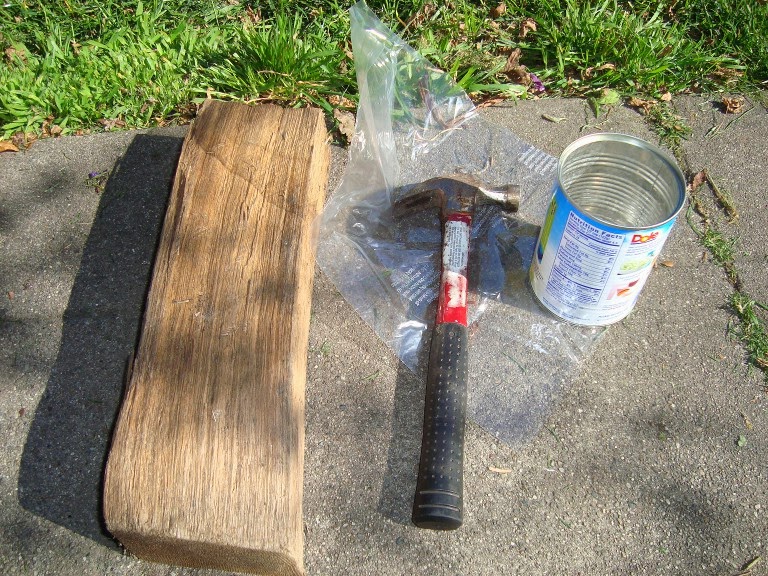Mass of Soil (dry)
Volume of Soil
A very high bulk density means the soil is very compacted, while a low bulk density means there is lots of pore space for air and water in the soil matrix.
As this handy table from the USDA shows, once you reach around 1.5 g/cm3 plant growth suffers.
Measuring bulk density on your own is extremely easy. To demonstrate the process I pitted my lovingly tended vegetable garden against a riparian zone in a local park. What site would come out with the lower bulk density? Would the minimal tillage and copious amounts of organic matter I dump in the veggie patch every season be enough to match the virgin uncultivated porosity of Glen Canyon's creeksides?
First, I had to gather my high tech soil sampling equipment. Block of wood, plastic bag, hammer, and aluminum can. Check.
It's important to know the volume of your sample. If you're using a can that had food in it, the volume is usually written on the label. If not, simply fill the can to its top with water and then measure this quantity of water in a measuring cup. Once you're set with the volume of your can, cut both the top and bottom out. It's nice to use a sturdy can with corrugated sides. Unfortunately we can only ask so much of our aluminum cans and when you're dealing with really compacted soils it's possible the can will buckle. In this case you actually do need a more sophisticated steel ring.
Once you're out into the field clear away any plant matter on the soil surface and pound the can straight into the ground using the block of wood to evenly distribute your impressive hammer blows.
Pound until the can is flush with the ground.
Now the trick is to remove the can from the ground without losing any soil. I find it's easiest to dig out around the can a little bit.
Gently pluck the can from the ground and slip it into your sample bag without losing any soil.
I dry the soil in an oven at very low temperatures. Whatever the lowest temperature you can use the oven at should be fine. Once the soil is dry, you can weigh the sample. Divide this weight by the volume of the can and you have your very own bulk density data.
So how did my vegetable patch fare against the riparian zone?
 | |||
| Veggie patch, 1.08g/cm3 |
 |
| Glen Park, 0.85g/cm3 |
Was my sample spot in the veggie patch too close to a pathway? Perhaps. Could the different soil textures of the samples account for some of the difference? Probably. Should I find a weaker competitor for the veggie patch next time? Definitely.












